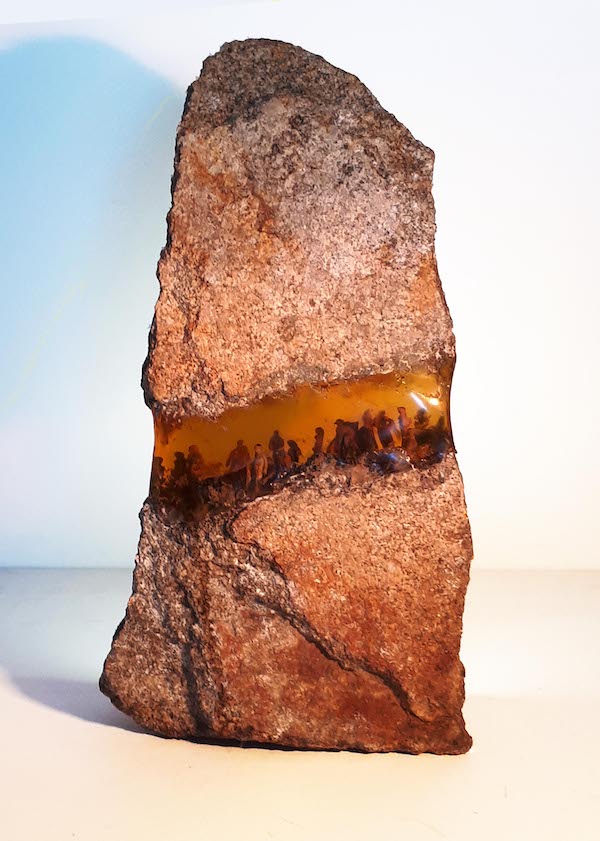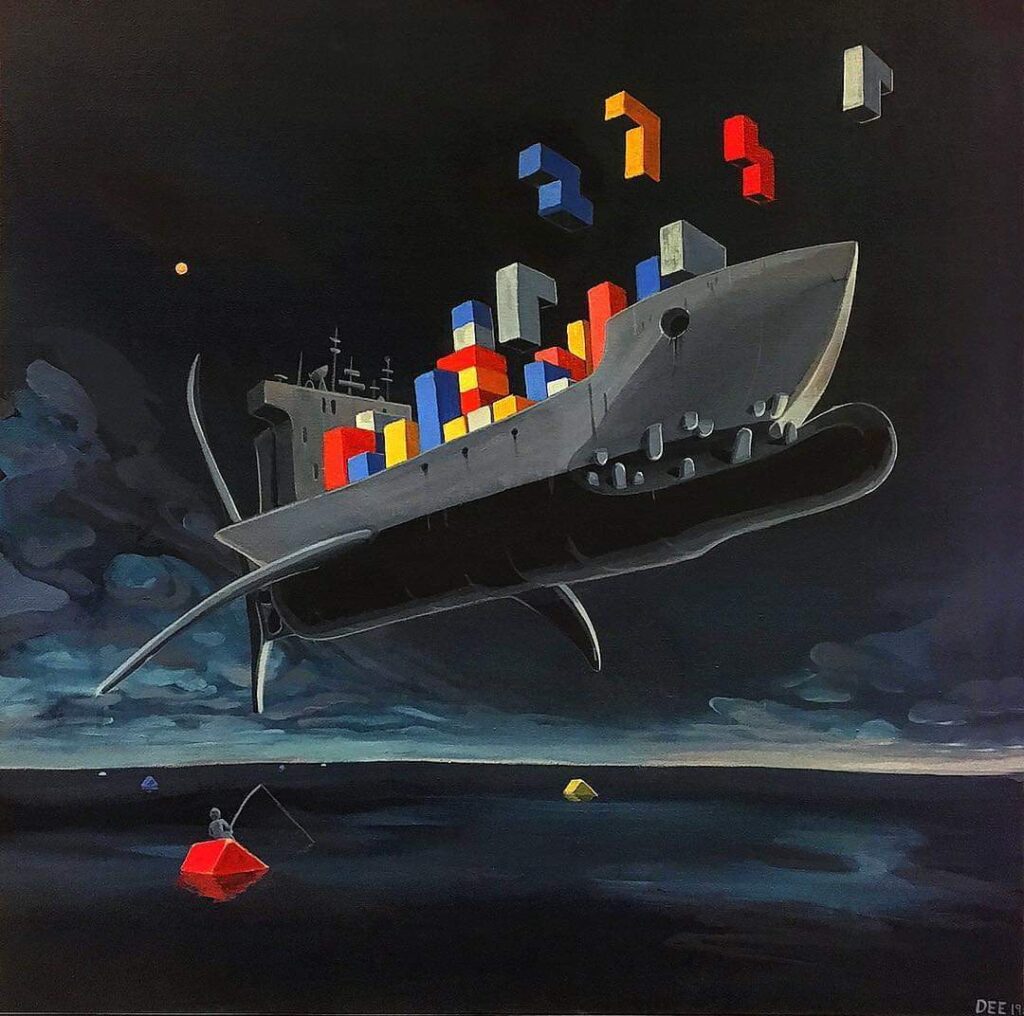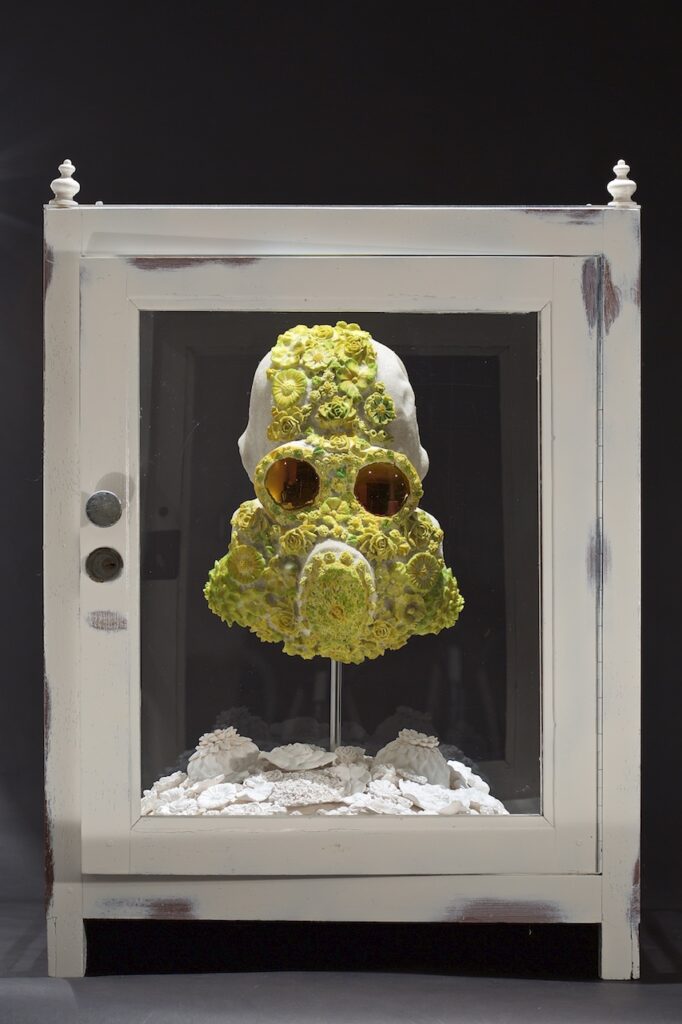STALA CONTEMPORARY’s collection of artistic responses to pandemic-induced isolation is a must-see, writes Belinda Hermawan; not just a snapshot but a call to persevere.
A snapshot of the new normal
15 July 2020
- Reading time • 7 minutesVisual Art
More like this
- A walk with Tina Stefanou
- A blaze of glorious people
- Diving into the gothic world of Erin Coates
“Refrain. Reflect. Reset. (Art in the Time of Corona)”, Various artists ·
STALA CONTEMPORARY, 10 July 2020 ·
As Perth continues to emerge from COVID-19 isolation, STALA CONTEMPORARY has reopened with a group exhibition that is truly of the moment: looking back at what was, what is and what will now be. Featuring paintings and sculptures created in confinement, the exhibition is a testament to the resilience of creative practice in times of upheaval.
The interrogation of our “new normal” is a central theme, both in recognising what is new to us and what becomes new through the lens of lockdown. The surreal nature of the onset of this pandemic is captured beautifully in Shana James’ etchings, with Alice falling into the darkness of rabbit hole, and a tea party asking us What will you allow and what will you deny? Embracing the monochrome, Mardi Crocker accords a quiet reverence to bottles of hand sanitiser in three of her paintings, with a fourth depicting three hands touching – an act of connection now almost taboo. It’s impossible not to be moved by these representations of our collective adjustment and shifting perspectives.

Alex Maciver conjures a sense of pained unreality and disruption in his vivid, abstracted paintings, with his three subjects of a person, a landscape and a desktop computer reflecting how our spheres were reduced to the interior, the exterior and the digital during lockdown. The last is explored in a number of works which depict how technology enabled but also disabled.
Marcia Espinosa’s two white sculptures, Detachment and Noise, tangle in cords and cables but suggest a prevailing blankness and disconnect. A blue-lit video call on a laptop does little to brighten the desaturated home scene in Michelle Hyland’s oil painting Transacting Boundaries, with the callers remaining indistinct. The relative size of an iPhone is emphasised in Ellen Norrish’s oil painting In between coats, reflecting how minimised and finite social interactions become during lockdown.
In looking at the pandemic response on a larger scale, society finds itself between a rock and a hard place in balancing public health and the economy. In what is the exhibition’s true highlight, Britt Mikkelsen’s breathtaking sculptural work suspends miniature human figures in resin between two layers of stone. Its relic or fossil-like quality implies that this is a cross-section of society; humanity preserved in amber, underground and safe yet also trapped by what lies above.

Lindsay Harris’s highly successful two paintings are fittingly installed at a corner – a convergence. A solitary red dot is trapped in the dark, cell-like confines in Solitude, whereas in Despair, a red spot is separated from its companion by a heavy black divider. In another arresting image, Wade Taylor’s Still Life with Kolé Beer and Caramel Slice is a far cry from the traditional oil painting of a fruit bowl; the tank top pinned up on the studio wall reminiscent of the wacky, early-lockdown Netflix obsession Tiger King.
The big cat image echoes nicely with Jarrad Martyn’s eerie painting Phantom, which shines the spotlight on a predator that was lurking in the darkness. Is the only predator the insidious virus? The sharks in the sky in Liam Dee’s acrylic paintings suggest the virus is not our only enemy, circling back to the structure of our cities and modern priorities. Shark Boat is a standout piece, it’s game-like feel especially fitting, a level of Tetris on an ever-moving vehicle up in the night sky. It’s a precarious, awe-inspiring, impossible balancing act.
It may be too early to fully unpack what we are going through. Tori Benz’s paired drawings and paintings speak to layers of experience: construction and deconstruction of images, one manmade, one natural. Yet even with the horrors and uncertainty, these works suggest that beauty can exist.

The Australian bush landscape in Di Cubitt’s Postcards to self is like a postcard from the earth, a reminder of where we are and what surrounds us. Sue Leeming refreshes the natural landscape in her oil and ink pieces which gleam like opals. The porcelain vessels in Alana McVeigh’s SILENCE in the Shadows of the Still-Life appear plain on the outside but are full of colour on the inside. Kathryn Haug presents household tools in Cut, Extend and Prune, the vibrance of the background paint calling to a healing amongst all the loss and finality.
Denise Pepper takes the humble face mask and adds flowers and luminescence, as if to say the party can go ahead – as long as safety is a priority. We may be able to elevate ourselves after all, much like the winged Happy Man held to the sky by a kangaroo in Ayad Alqaragholli’s bronze statue.
I strongly recommend STALA CONTEMPORARY’s exhibition as a time capsule of a dynamic sort: not just a snapshot but a call to persist, wherever we are in our respective timelines.
– Belinda Hermawan
Pictured top: Detail from Alex Maciver’s ‘Conditioned’.
Like what you're reading? Support Seesaw.






